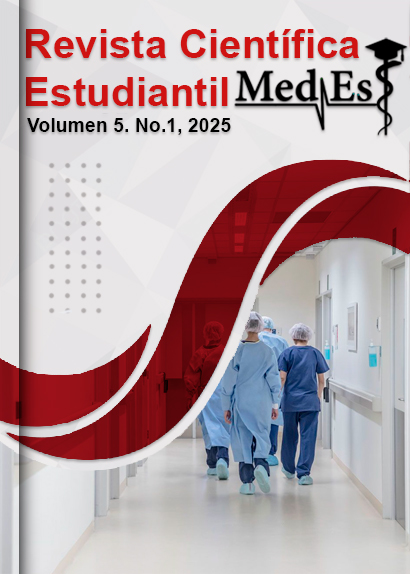Exposure to electrocautery smoke: risk to the health of surgical personnel
Keywords:
Methods, Carbon dioxide, Ligation, PatientsAbstract
Surgery has made significant progress throughout history by addressing three key challenges: pain, infection and bleeding. These achievements have been achieved through the introduction of anesthesia, aseptic and antiseptic practices, the use of antimicrobial therapy and the adoption of Halstedian surgical techniques. Innovations such as blood vessel ligation, diagnostic imaging techniques, advances in organ transplants and nutritional therapies have also contributed to improved surgical outcomes.
However, the use of technologies such as electrocautery and laser surgery generates surgical smoke, which poses health risks to surgical personnel due to its aerosolized components. Since the 1980s, health problems related to continuous exposure to this smoke have been documented, including headaches, airway irritation, dermatitis and risk of transmission of the human papillomavirus (HPV). The impact of daily exposure to surgical smoke can be as serious as the damage caused by passive smoking. Studies suggest that tissue destruction using techniques such as laser ablation and electrocautery can have effects similar to smoking multiple cigarettes. Despite the risks, there is a lack of awareness among healthcare professionals about surgical smoke. Therefore, increased education and training is essential to promote a safer surgical environment.
Downloads
References
1. Ensuncho Hoyos C, Barguil Fernández de Castro SE, Lara Fortich D, De Moya Jaramillo HA. El humo del electrocauterio, el riesgo olvidado y minimizado de la cirugía. Rev Colomb Cir. [Internet] 2024 [citado 25/10/2024]; 39:459-466. Disponible en: https://www.revistacirugia.org/index.php/cirugia/article/view/2461
2. Villa Perea JA. Humo quirúrgico y sus implicaciones en el personal de quirófano. Rev Colomb Salud Ocup [Internet]. 2022 [citado 25/10/2024]; 12(1):e7498. Disponible en: https://revistas.unilibre.edu.co/index.php/rc_salud_ocupa/article/view/7498
3. Tomita Y, Mihashi S, Nagata K, Ueda S, Fujiki M, Hirano M, Hirohata T. Mutagenicity of smoke condensates induced by CO2-laser irradiation and electrocauterization. Mutation research. [Internet] 1981 [citado 25/10/2024]; 89(2):145–149. Disponible en: https://pubmed.ncbi.nlm.nih.gov/7027028/
Downloads
Published
How to Cite
Issue
Section
License
Copyright (c) 2024 Andy Guillermo Paumier-Durán

This work is licensed under a Creative Commons Attribution-NonCommercial 4.0 International License.
Those authors who have publications with this journal accept the following terms: The authors will retain their copyright and guarantee the journal the right of first publication of their work, which will be simultaneously subject to the Recognition License. Creative Commons that allows third parties to share the work as long as its author and its first publication in this magazine are indicated. Authors may adopt other non-exclusive license agreements for the distribution of the published version of the work (e.g.: deposit it in an institutional telematic archive or publish it in a monographic volume) as long as the initial publication in this journal is indicated. Authors are allowed and recommended to disseminate their work through the Internet (e.g.: in institutional telematic archives or on your website) before and during the submission process, which can produce interesting exchanges and increase citations of the published work.





